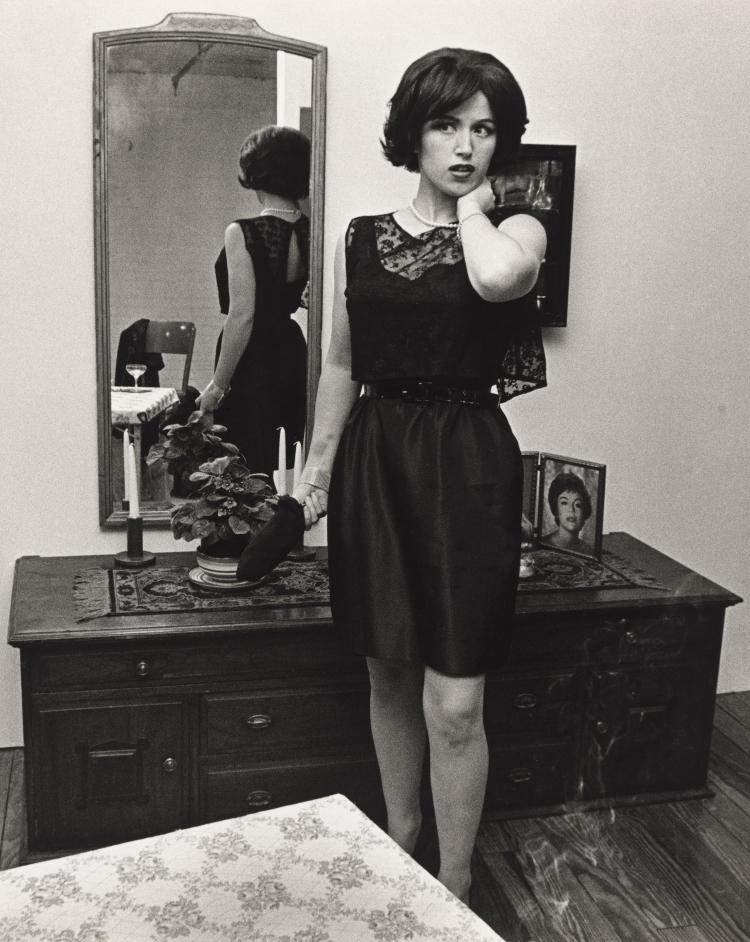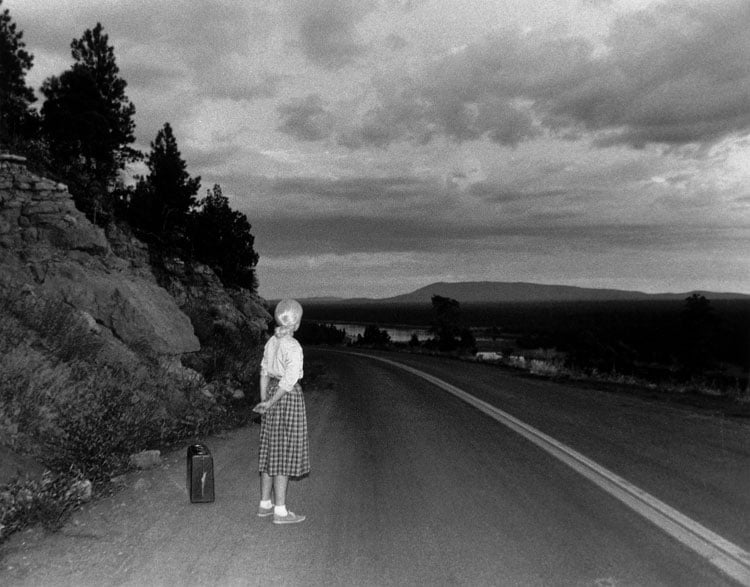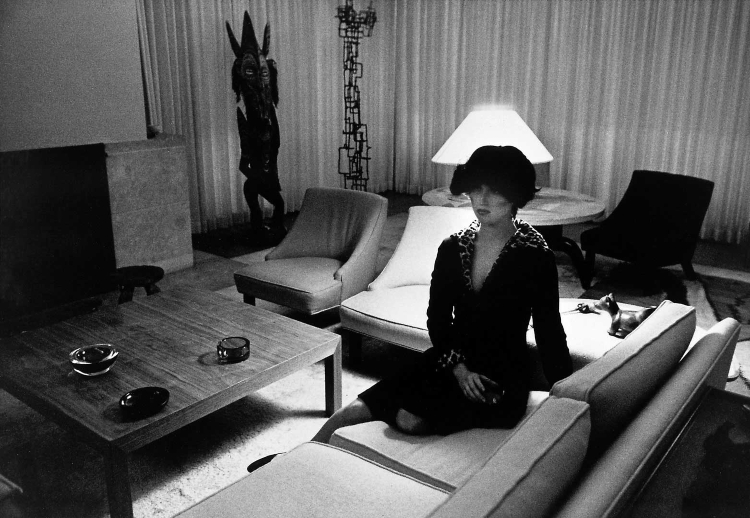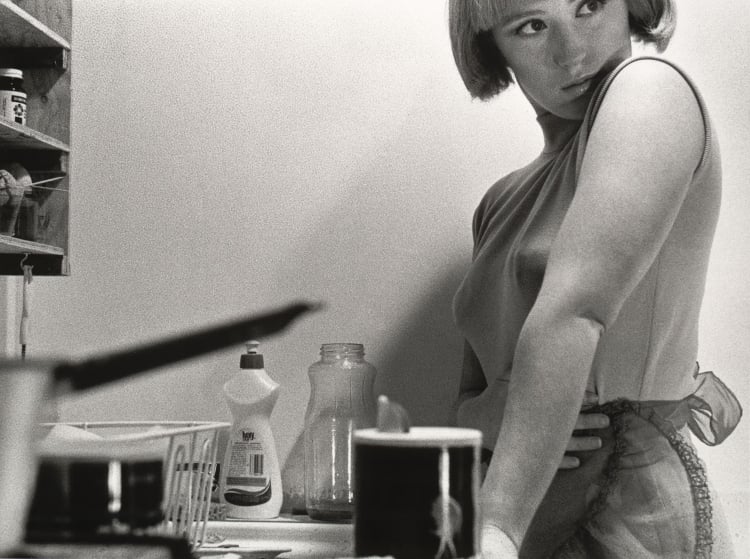Who is Cindy Sherman? | A Postmodern Portrait of the Artist
Cindy Sherman’s Untitled Film Stills fits neatly, in many ways, into the criteria set out by postmodernism. The series grapples with the idea of the constructed self, and the illusion of identity. It also raises questions about the state of reality.
In addition, the Untitled Film Stills disputes the merits of originality in art. Sherman manages to paradoxically create copies of images that have no original source. Similarly, postmodernism promotes the idea that everything in the world is simply a trace of its original state, diluted through endless loops of copies, to the point that its true essence is lost.
The primary draw of the Untitled Film Stills is the array of stereotypes in which Sherman loses herself. Each character prompts a narrative (created by the viewer) which challenges traditional ideas of authorship. These aspects are the ones that make Sherman’s debut work such an exemplary example of postmodern art.

Untitled Film Stills is a series of 69 black and white photographs, created between 1977 and 1980. The images depict Sherman in a series of different guises—archetypal female film roles. They are shot in the style of 1950s B movies and Hollywood Film Noir cinematography. Often similar characters emerge, so that mini-series are created within the larger work.
Supposedly inspired by her childhood game of dress up, the series developed from Sherman’s hobby of collecting vintage clothes and accessories from thrift shops, which exemplified certain qualities for her. Sherman began dressing up as these characters prior to Untitled Film Stills out of personal interest. However, it wasn’t until after she graduated and moved to New York that she began photographing herself in different scenarios.

Most commonly, the series is seen as a comment on the media’s perpetuation of female stereotypes, and the fragmented sense of self that is created for women as a result. Susan J. Douglas stated that:
the mass media’s most important legac[y] for female consciousness [is] the erosion of anything resembling a unified self.
This idea is certainly reflected in Sherman’s series, in which she takes on the persona of stereotyped female roles, as portrayed in films. In doing this, Sherman buries her own identity in the myriad of characters she assumes.
Though often read with a feminist slant, Sherman’s assumption of different identities is consistent with postmodernism’s theories on reality and originality. Postmodern explorations of Hyper-Reality have resulted in claims that reality and illusion are indistinguishable. If we have lost the essence of ourselves, which seems to be postmodernism’s great claim, then surely all that we can do is assume the ‘idea’ of a person.
This is exactly what Sherman does in her Untitled Film Stills. She appropriates established personas from classic films, and uses them to construct a series of identities for herself. Such a practice raises questions like “who is the real Cindy Sherman?” Or, perhaps more bleakly, “is there a real Cindy Sherman?”

Sherman’s series explores the idea of reality, and, arguably, questions regarding the existence of reality. By slipping so easily from one identity to another, Sherman shows us how tenuous the concept of identity is. If Sherman can be 69 different women, and simultaneously none of them, then there is no way for us to definitively say who she is, or isn’t.
Sherman consciously chooses her different identities as an overt display of the illusion of Self. She forces the viewer to confront the notion that the concepts we have of ourselves are simply constructed; that individuality is a delusional perception.
While Sherman’s work primarily plays with the concept of identity, it also engages with the idea of the Copy. As stated above, Sherman’s Untitled Film Stills is a series of copies with no traceable source. Its allusion to an “original” is created by the fact that both real film stills and Sherman’s fabricated ones are based on a shared remembered fantasy of a character. This character is not only fictional, but is also a construct of all the romances she has ever experienced. These layers of communal “memory” ultimately result in what seems like an authentic copy, even though no “real” original exists.

So, Sherman’s Untitled Film Stills is, then, a reproduction of an image that every viewer possesses in their mind. It only becomes a copy once the viewer imparts their own associations into it. While Sherman is arguably not the author of this work, neither is the viewer, as every reading is based on a single “original memory.” Interpretations of her images are simply attempts to identify the initial trace, which is lost and now recalled as a memory.
With its exploration of the simulacrum and its conflict with traditional ideas about identity, Sherman’s Untitled Film Stills raises crucial questions about reality, and engages strongly with the principles of postmodernism. Her numerous alter egos cast doubts upon a definitive sense of self, and her copies of sourceless material subscribe to postmodernism’s claim that originality has ceased. Deconstructing the myths we have about ourselves and our surroundings, Sherman’s work is an ideal example of postmodern art.
